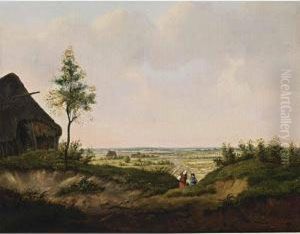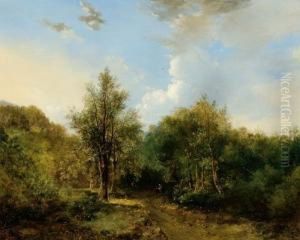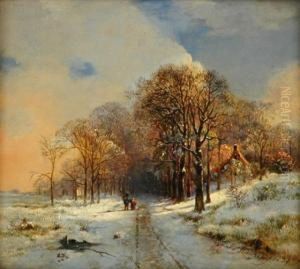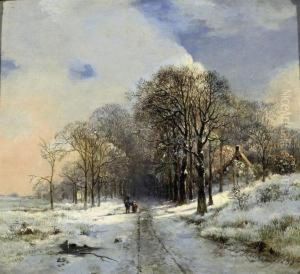Joannes Petrus Waterloo Paintings
Joannes Petrus (Jan) Waterloo was a Dutch landscape artist, known for his etchings and drawings, born in Amsterdam in 1610. His work is characterized by detailed depictions of forests, rivers, and rural scenes, often populated with figures and animals, which reflect the influence of the Dutch Golden Age of painting. During this period, there was a great appreciation for landscape as a subject for art, which was inspired by a sense of national pride in the Dutch countryside and an increasing interest in the natural world and travel.
Waterloo's technique was influenced by other Dutch masters of the time, such as Rembrandt van Rijn, especially in his use of light and shadow to create depth and atmosphere. Although Waterloo is less well-known than some of his contemporaries, his work provides an important insight into the landscape genre of the 17th century. He is particularly noted for the fine detail and precision of his etchings, which were highly regarded by his contemporaries and remain appreciated by collectors and art historians.
Waterloo never left the Netherlands, which was somewhat unusual for artists of his time, who often traveled to Italy and other parts of Europe to study. Despite this, he managed to capture a wide variety of landscapes, suggesting a vivid imagination and a keen observation of the different landscapes available within his native country. His works were collected by prominent individuals of his time, and his influence extended to other artists who sought to capture the Dutch landscape.
Jan Waterloo's death occurred in 1680 in Amsterdam. Although not as widely recognized as some of his peers, his contribution to Dutch art and the genre of landscape etching and drawing has secured him a place in the annals of art history. Today, his works can be found in various art museums and collection.



